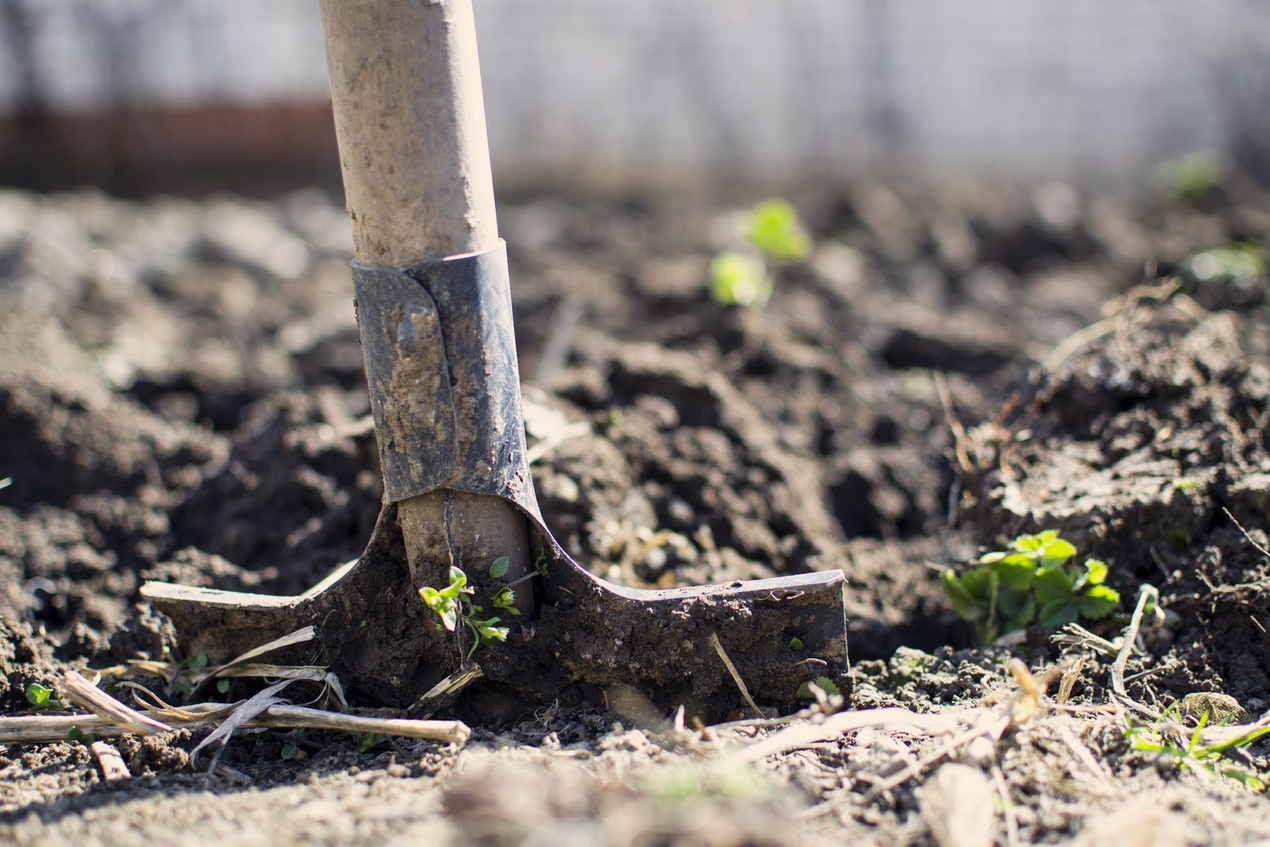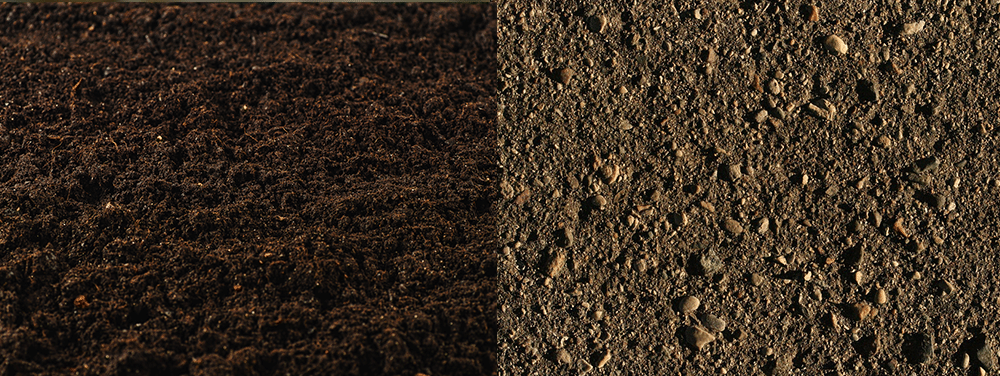
Dirt or Soil?
The essential rule is to replicate the habitat the plant is naturally adapted to, and you’ll have healthy plants without any hassle. Your houseplants may hail from all different corners of the globe, with drastically different climates. What works for one, might not fit another plant’s needs. Picturing the climate your plant is from will give you the best idea of their needs and how to meet them.
Soil: Soil is a dynamic, living environment. It is chock-full of billions of bacteria, fungi, protozoa, and nematodes per square inch. The diversity of life from the visible to the invisible is what makes it the complex, life-supporting cradle that it is. Soil actually encapsulates an entire ecosystem that is a foundation for life in your garden and those all over the world.
Dirt: Dirt may look similar to soil, but it is largely dead. Without the vibrant web of life that soil holds, dirt is generally unable to support the growth of healthy plants without the supplements of chemicals like synthetic fertilizers. Ironically, the harshness of these chemicals is also what prevents dirt from becoming healthy soil.

Large-scale industrial agriculture is constantly coaxing life out of dirt to produce the crops needed each year. Massive amounts of fertilizers and chemicals are needed to grow only the exact crops planted year after year. Permaculture and smaller-scale growing in your backyard have the privilege of focusing on creating a healthy garden. Instead of killing your soil with chemicals, the educated application of the right methods and products allows you to foster and embrace a healthy ecosystem at home.
Taking Care of Your Soil
Nature has had its natural processes figured out for billions of years now – one of the best things that we can do for our yard is to understand how we can help it to be healthy on its own, rather than fighting it. If we give our garden space to function how it is designed – simply giving a nudge here or there in the right direction, instead of seizing control – the reward is a healthier yard with less hassle.
A healthy, natural garden ecosystem relies on balance. Good soil will have beneficial bacteria and critters, with just enough “bad” pests and predators to keep everything in check. In a perfect healthy soil ecosystem, everything self-regulates. The vast numbers of beneficial creepy-crawlies, fungi, and invisible bacteria are essential to healthy soil. These organisms work tirelessly to ensure your soil is full of nutrients for growth. All of your soil’s bacteria, fungi, and organisms work hard to break down material in your garden to recycle it into useful nutrients. These organisms make a complex system that is actually the beginning of life in your garden, and without them, your soil would quickly be depleted of nutrients. Even over time, your soil can become depleted of nutrients as it works to support successive years of plants. We can be tempted to use synthetic fertilizers as a quick solution to feed our plants, but these harsh chemicals can actually harm the life of your soil in the long run.
Synthetic fertilizers are so concentrated that they can accidentally kill off the microscopic life in your soil. Also, when we use pesticides or herbicides in our garden, it often kills much more than just the targeted pest. By wiping out the entire biome of the garden, it disrupts your healthy ecosystem and allows the problem to get worse as opportunistic pests settle in, or cripples your garden’s ability to feed itself.
There are still some times where using chemicals to boost your garden is appropriate – but it is important to understand how they work to ensure you can maintain the health of your soil. Modern gardening has started to look away from synthetic chemicals and fertilizers for this reason. Sometimes your garden problems have organic and natural solutions that don’t require you to take any risks with your soil health.
Non-Chemical Solutions
Synthetic and organic fertilizers work in different ways. While your synthetics are a quick hit of nutrients that may be ideal for demanding annuals, organic fertilizer is the perfect way to invest in the health of your soil. While synthetics feed your plants, organic fertilizers will feed your soil as well. By mixing some organic fertilizers into your gardening, you’ll work your way towards healthy soil by enriching it constantly.
There are many different organic fertilizers to choose from, in many forms, because anything that is naturally derived and feeds your garden, counts. Our favorite organic fertilizer is compost. You can buy it or make it at home, but mixing compost into your garden will provide both macro and micronutrients to sustain your soil and plants for a season. For excellent compost results, we recommend mixing in some leaf mulch. This mulch is packed with nutrients that break down and add to the soil gradually, but much more effectively than popular bark mulch. Ask us in-store about how you can use leaf mulch to boost the health of your garden for healthier plants this year!
Other Soil Care Tips
Dig with care: Good news, you can put down that shovel! Overworking your soil can actually harm your soil ecosystem. When you expose microorganisms to too much oxygen or accidentally chop up helpful critters, you harm your soil’s ability to create nutrients. Not to mention, stirring up your soil can bring weed seeds to the surface, making your garden problems worse than when you started. Try to only till, fork, or shovel when you need to – like to add compost to the soil in the spring. Otherwise, leave your tools in the shed and let your soil work away undisturbed.
Foot Traffic: Air pockets are an important aspect of healthy soil, fuelling microorganisms without exposing them and allowing fibrous roots to grow. Each step in your garden compacts the soil and can crush these important pockets! Try to avoid excessive foot traffic in your veggie and flower beds, especially when the soil is wet. To avoid damage, try laying 2×8 boards on the high-traffic areas of your garden. By using these boards to stand and walk on you’ll reduce soil compaction (and also suppress weeds).
As with many things, a good foundation is the best thing you can do to ensure success. This spring season is the perfect opportunity to make sure you are creating a healthy, living ecosystem in your soil, so you can have a healthy garden with less work each year. We would love to see you in either of our locations to talk about what organic fertilizers are the best fit for you and your soil, and how to get you started.









